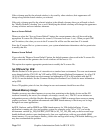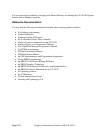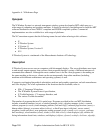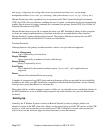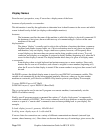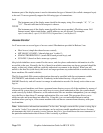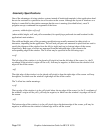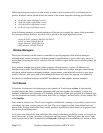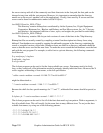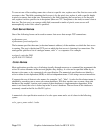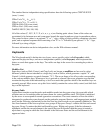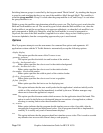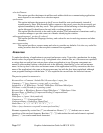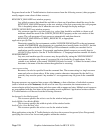the server start up with all of the commonly used font directories in the font path, the font path can be
changed at any time with the xset program. However, it is important to remember that the directory
names are on the server's machine, not on the application's. Usually, fonts used by X servers and font
servers can be found in subdirectories under /usr/lib/X11/fonts:
/usr/lib/X11/fonts/iso_8859.1/75dpi
This directory contains bitmap fonts contributed by Adobe Systems, Inc., Digital Equipment
Corporation, Bitstream, Inc., Bigelow and Holmes, and Sun Microsystems, Inc. for 75 dot-per-
inch displays. An integrated selection of sizes, styles, and weights are provided for each family.
/usr/lib/X11/fonts/iso_8859.1/100dpi
This directory contains 100 dot-per-inch versions of some of the fonts in the 75dpi directory.
Bitmap font files are usually created by compiling a textual font description into binary form, using
bdftopcf. Font databases are created by running the mkfontdir program in the directory containing the
source or compiled versions of the fonts. Whenever fonts are added to a directory, mkfontdir should be
rerun so that the server can find the new fonts. To make the server reread the font database, reset the font
path with the xset program. For example, to add a font to a private directory, the following commands
could be used:
$ cp newfont.pcf ~/myfonts
$ mkfontdir ~/myfonts
$ xset fp rehash
The xlsfonts program can be used to list the fonts available on a server. Font names tend to be fairly
long, as they contain all of the information needed to uniquely identify individual fonts. However, the X
server supports wildcarding of font names, so the full specification
"-adobe-courier-medium-r-normal--10-100-75-75-m-60-iso8859-1"
might be abbreviated as
"-*-courier-medium-r-normal--*-100-*-*-*-*-iso8859-1".
Because the shell also has special meanings for "*" and "?", wildcarded font names should be quoted, as
in:
$ xlsfonts -fn '-*-courier-medium-r-normal--*-100-*-*-*-*-*-*'
The xlsfonts program can be used to list all of the fonts that match a given pattern. With no arguments, it
lists all available fonts. This will usually list the same font at many different sizes. To see just the base
scalable font names, try using one of the following patterns:
-*-*-*-*-*-*-0-0-0-0-*-0-*-*
-*-*-*-*-*-*-0-0-75-75-*-0-*-*
-*-*-*-*-*-*-0-0-100-100-*-0-*-*
Graphics Administration Guide for HP-UX 10.20
Page 132



